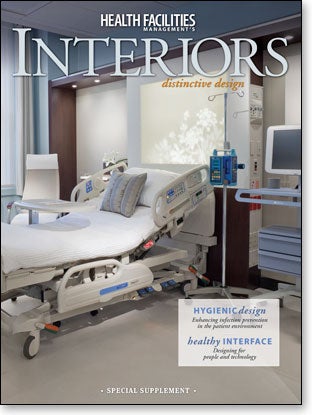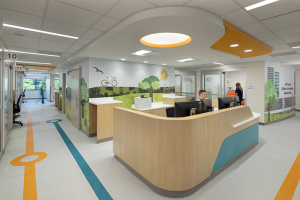Interiors
In August, the Agency for Healthcare Research and Quality (AHRQ) issued a statistical brief on health care-associated infections (HAIs) that was as interesting for the data it provided as it was for different ways the findings played in the media.
 | Hygienic Design Healthy Interface |
In case you missed it, the report analyzed data from 2000 to 2007 on adult hospital stays with infections due to medical care. Many news accounts about the brief focused on the fact that HAI rates among adults were trending downward, after peaking in 2004 and 2005. Other news reports largely focused on AHRQ data showing that adults who developed HAIs due to medical or surgical care while hospitalized had much longer and costlier stays than those who didn't develop an infection.
No matter which issue you focus on, though, there's an underlying message for hospital designers, clinicians, environmental services professionals and product designers: There remains considerable room for improvement in reducing costly HAIs.
In our lead story in this edition of Interiors, we examine some of the ways health care providers, architects and manufacturers are working together to provide more hygienic facility designs. From new sink layouts that help boost hand-hygiene compliance to creating storage areas outside patient rooms that make it easier for caregivers to access personal protective equipment, innovation is flourishing.
In our second feature, we explore how hospitals and their designers are creating more tech-friendly environments, an imperative in the post-health care reform era. One particularly interesting innovation is allowing new mothers to connect with loved ones remotely via video monitors. Elsewhere, custom headwalls are creating a better patient environment without sacrificing quick access to medical technology. And, again, innovation is thriving.
Bob Kehoe
Associate Publisher Health Facilities Management




